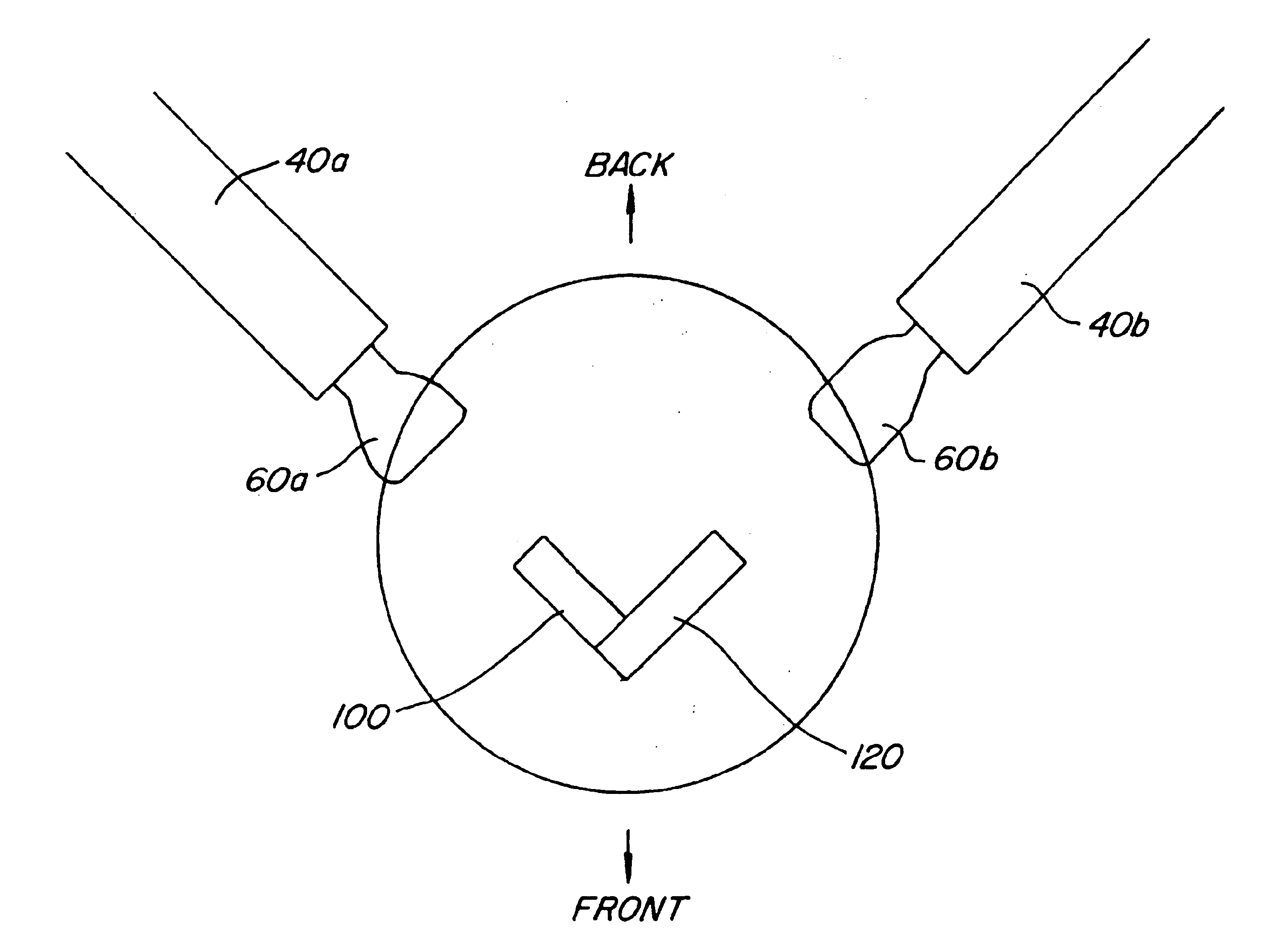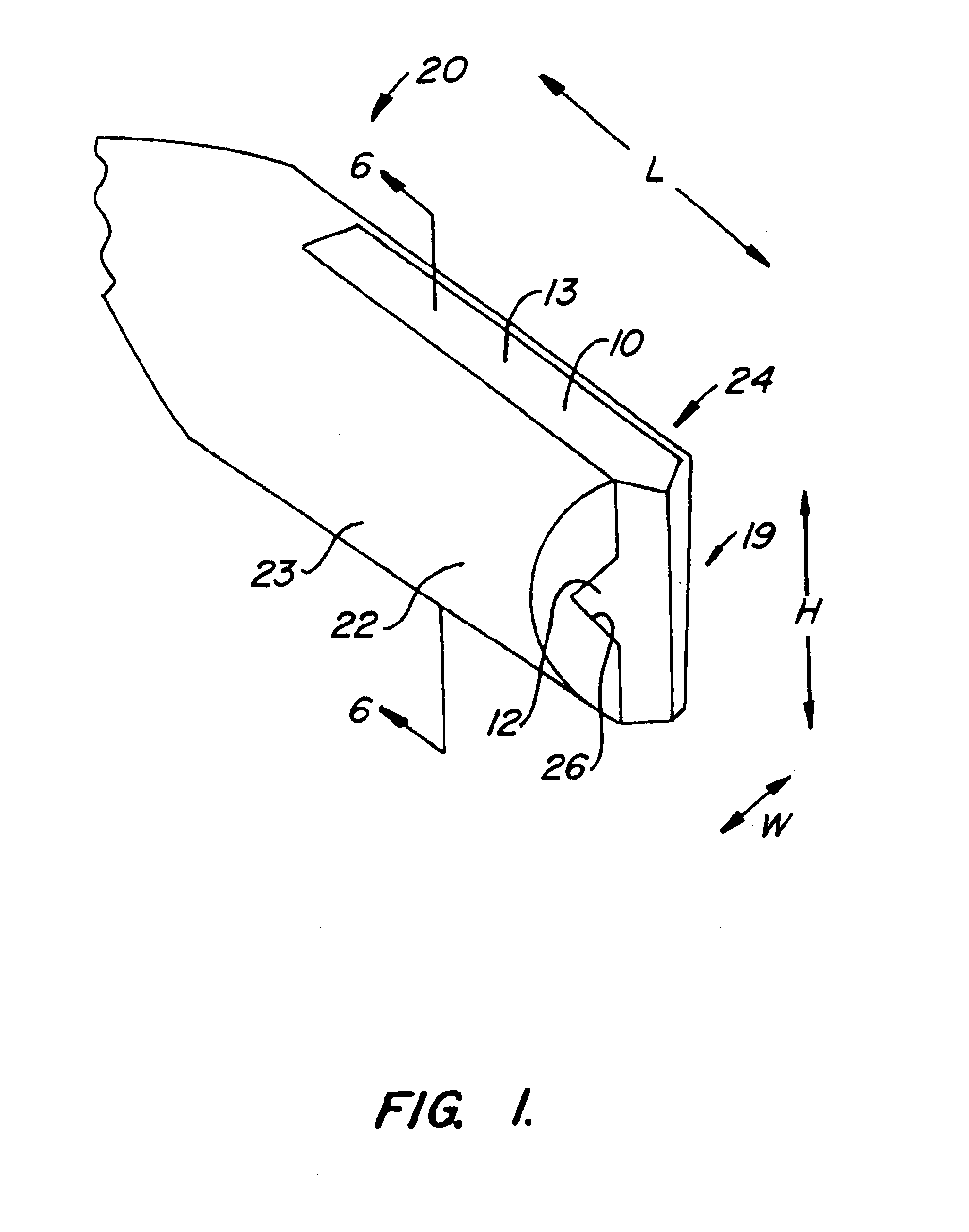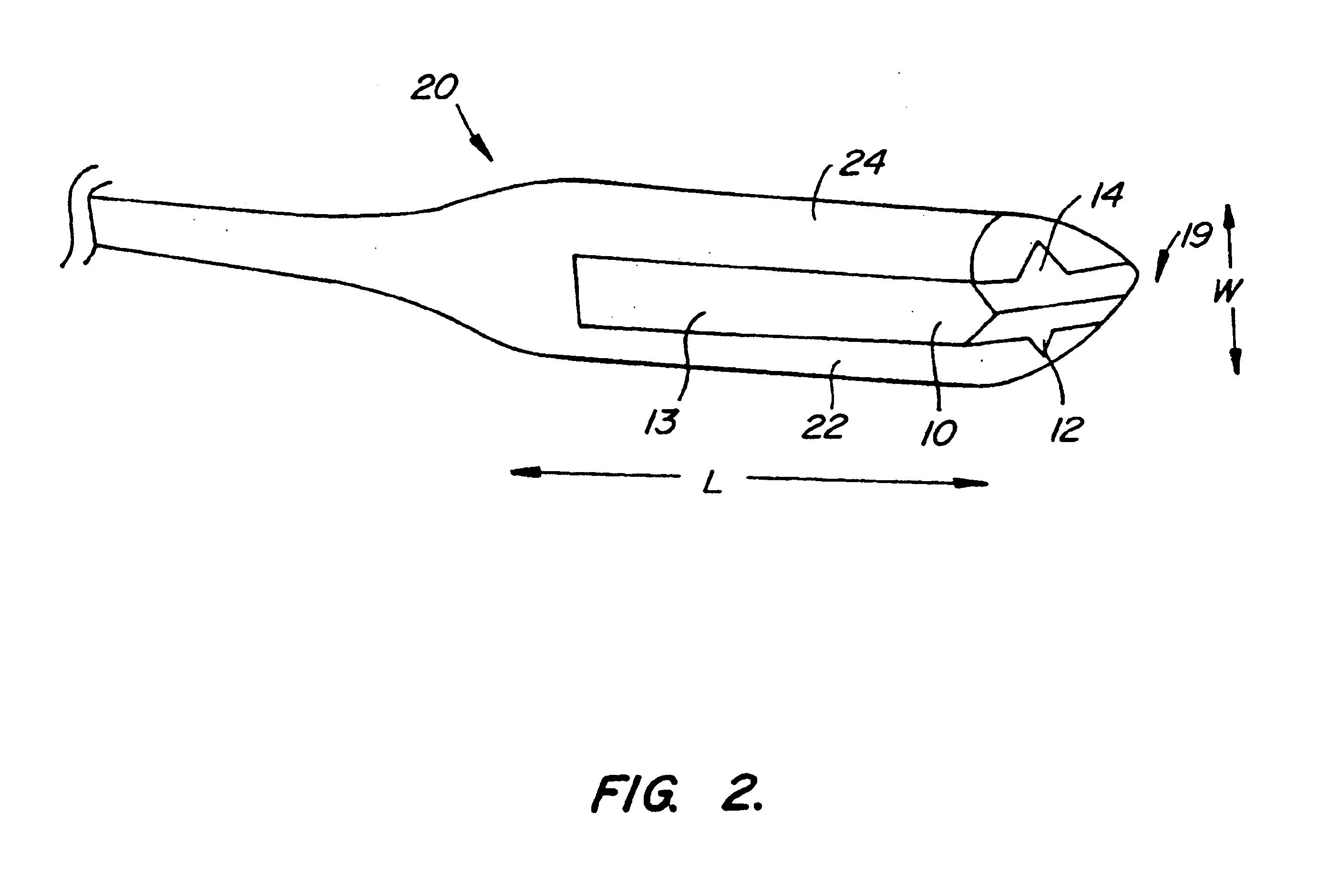Bone blocks and methods for inserting bone blocks into intervertebral spaces
a technology of bone blocks and intervertebral space, which is applied in the field of bone blocks, can solve the problems of accelerating the degeneration of vertebrae, affecting the stability of patients' intervertebral space, and affecting the stability of patients, so as to achieve the space for placement, increase the stability of vertebrae, and reduce the effect of nerves
- Summary
- Abstract
- Description
- Claims
- Application Information
AI Technical Summary
Benefits of technology
Problems solved by technology
Method used
Image
Examples
Embodiment Construction
[0070]The present invention provides a novel system for inserting and positioning one or two bone blocks between adjacent vertebrae.
[0071]Referring to FIG. 1, a novel shaped bone block 10 is held between opposite prongs 22 and 24 of bone block inserter 20. Bone block 10 is formed from donor bone tissue, and operates to conduct bone fusion between adjacent vertebrae after it has been implanted between the vertebrae by inserter 20, as will be explained. Prongs 22 and 24 each have curved outer surfaces 23 and 25, respectively, and inner longitudinally extending grooves 26 and 28, (seen more clearly in FIG. 3), respectively.
[0072]Subsequent to placement between adjacent vertebrae, (as will be explained more fully herein), bone block 10 is removed from inserter 20. In a preferred aspect, as shown in FIG. 3, a push rod 30 is preferably received within a longitudinally extending central bore (not shown) in inserter 20. As such, bone block 10 can be held at a fixed position between the adja...
PUM
 Login to View More
Login to View More Abstract
Description
Claims
Application Information
 Login to View More
Login to View More - R&D
- Intellectual Property
- Life Sciences
- Materials
- Tech Scout
- Unparalleled Data Quality
- Higher Quality Content
- 60% Fewer Hallucinations
Browse by: Latest US Patents, China's latest patents, Technical Efficacy Thesaurus, Application Domain, Technology Topic, Popular Technical Reports.
© 2025 PatSnap. All rights reserved.Legal|Privacy policy|Modern Slavery Act Transparency Statement|Sitemap|About US| Contact US: help@patsnap.com



